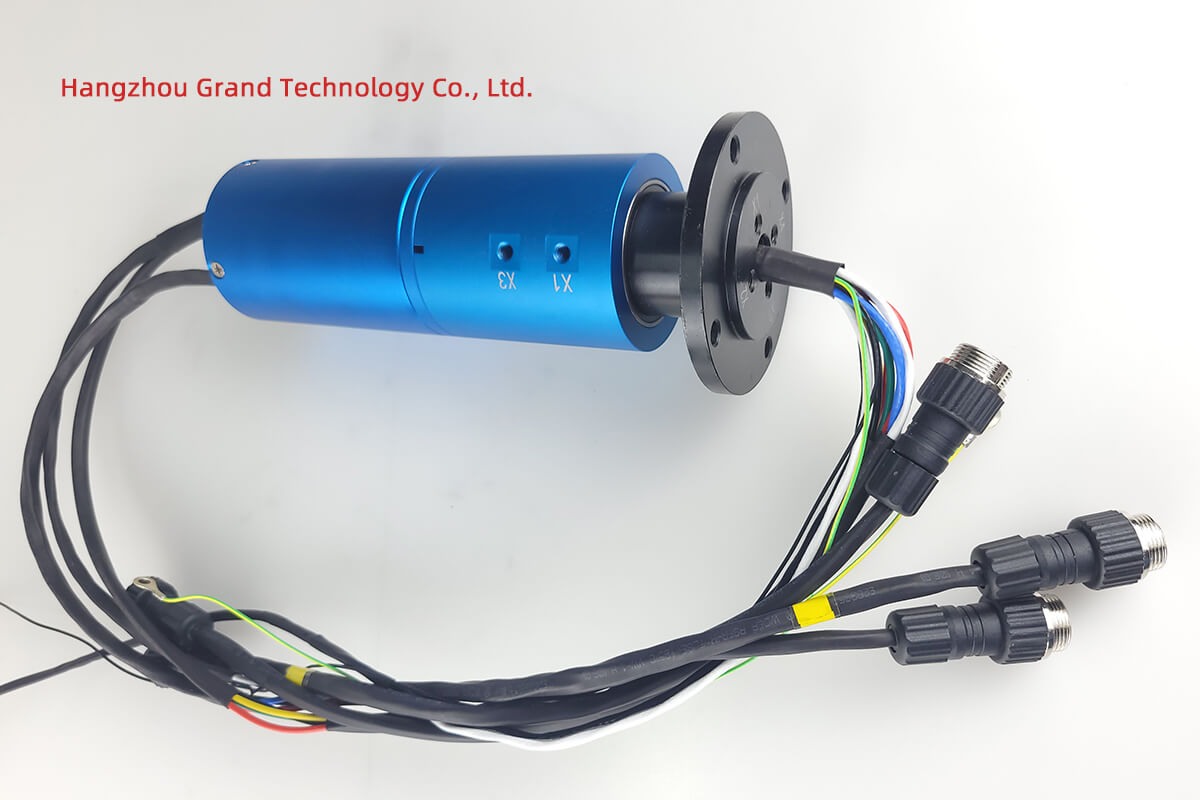In the world of industrial machinery, high voltage slip ring motors play a critical role in powering specialized equipment and processes. These motors are designed to handle high electrical voltages, making them invaluable assets in industries where power and efficiency are paramount. This article aims to shed light on the applications and advantages of high voltage slip ring motors in industrial settings, emphasizing their significance in driving productivity and innovation.
Definition and Core Components
High voltage slip ring motors are a specialized type of electric motor capable of handling elevated electrical voltages. They share similarities with conventional slip ring motors in their design and operational principles. The core components of a high voltage slip ring motor include the rotor, slip rings, brushes, stator, and external resistors. The rotor consists of insulated windings wound around a laminated core, creating a more complex structure compared to the solid bars found in squirrel-cage rotors. The slip rings, typically made of conductive material, are mounted on the rotor shaft and provide electrical contact to the rotor windings. Brushes, usually made of carbon or graphite, maintain continuous contact with the slip rings, enabling electrical connections between the stationary and rotating parts of the motor. During motor start-up, external resistors are introduced to the rotor circuit via the slip rings and brushes. These resistors limit the current flowing through the rotor windings, facilitating a controlled increase in voltage and providing high starting torque.
High Voltage Applications
High voltage slip ring motors find extensive use in various industrial applications, where their ability to handle elevated electrical voltages is crucial. Some notable applications include:
– High-Power Pumps in Manufacturing Processes: High voltage slip ring motors are employed in manufacturing processes that require powerful pumps to move liquids or gases at high flow rates. These applications include large-scale chemical processing, petroleum refining, and water treatment plants. The high power handling capacity of these motors ensures efficient fluid transportation and reliable operation.
– Mixers and Agitators in Industrial Mixing Processes: Mixing and agitation processes in industries such as pharmaceuticals, food and beverage, and chemicals demand high torque and speed control. High voltage slip ring motors are well-suited for these applications, as they can handle the power requirements while providing precise speed adjustments for optimal mixing efficiency.
– Extruders in Plastic and Polymer Industries: Extruders play a crucial role in shaping and forming plastics and polymers. High voltage slip ring motors power these machines, enabling precise control over the extrusion process. The ability to handle high power demands ensures efficient extrusion and consistent product quality.
Advantages and Efficiency
One of the primary advantages of high voltage slip ring motors is their high-power handling capacity. These motors can efficiently operate at elevated electrical voltages, delivering the necessary power to drive heavy-duty industrial processes. Their ability to handle high torque requirements and provide precise speed control contributes to enhanced productivity and operational efficiency.
High voltage slip ring motors also offer improved energy efficiency. With higher voltage operation, the current required for a given power output is reduced, resulting in lower energy losses and reduced power consumption. This energy-efficient operation not only saves costs but also aligns with the growing emphasis on sustainability and environmental responsibility in industrial practices.
Considerations for Implementation
Implementing high voltage slip ring motors in industrial setups requires careful consideration and engineering expertise. Safety is a paramount concern when dealing with high electrical voltages, and appropriate safety measures must be followed during motor installation and operation. Proper insulation and grounding of motor components are essential to prevent electrical hazards and ensure safe working conditions.
Engineers must also account for load requirements and torque characteristics when selecting high voltage slip ring motors for specific applications. Proper matching of motor specifications with equipment demands ensures optimal performance and longevity.
Challenges and Maintenance
The maintenance requirements for high voltage slip ring motors are critical for ensuring safe and efficient motor operation. Regular inspection and maintenance of slip rings and brushes are essential to maintain reliable electrical contact and prevent performance issues. Routine checks on the motor’s insulation and grounding are crucial to ensure the safety of personnel and equipment.
Challenges faced when using high voltage slip ring motors include managing the complexity of the motor design, which can lead to higher manufacturing and maintenance costs. However, the advantages of these motors often outweigh the challenges in applications where high power, torque, and speed control are essential.
High voltage slip ring motors play a vital role in powering specialized machinery in various industries. Their ability to handle elevated electrical voltages, along with their high-power handling capacity and efficiency, makes them indispensable assets in applications requiring precision, power, and reliability. From high-power pumps to industrial mixers and extruders, these motors contribute significantly to industrial efficiency and productivity.
As industries continue to evolve and advance, high voltage slip ring motors will remain relevant and sought after for their unique capabilities. Understanding their applications and advantages is crucial for engineers and industrial professionals seeking to harness their power effectively and drive innovation in the modern industrial landscape. The continued growth and relevance of high voltage slip ring motors exemplify their enduring importance in powering specialized machinery and industrial processes.


